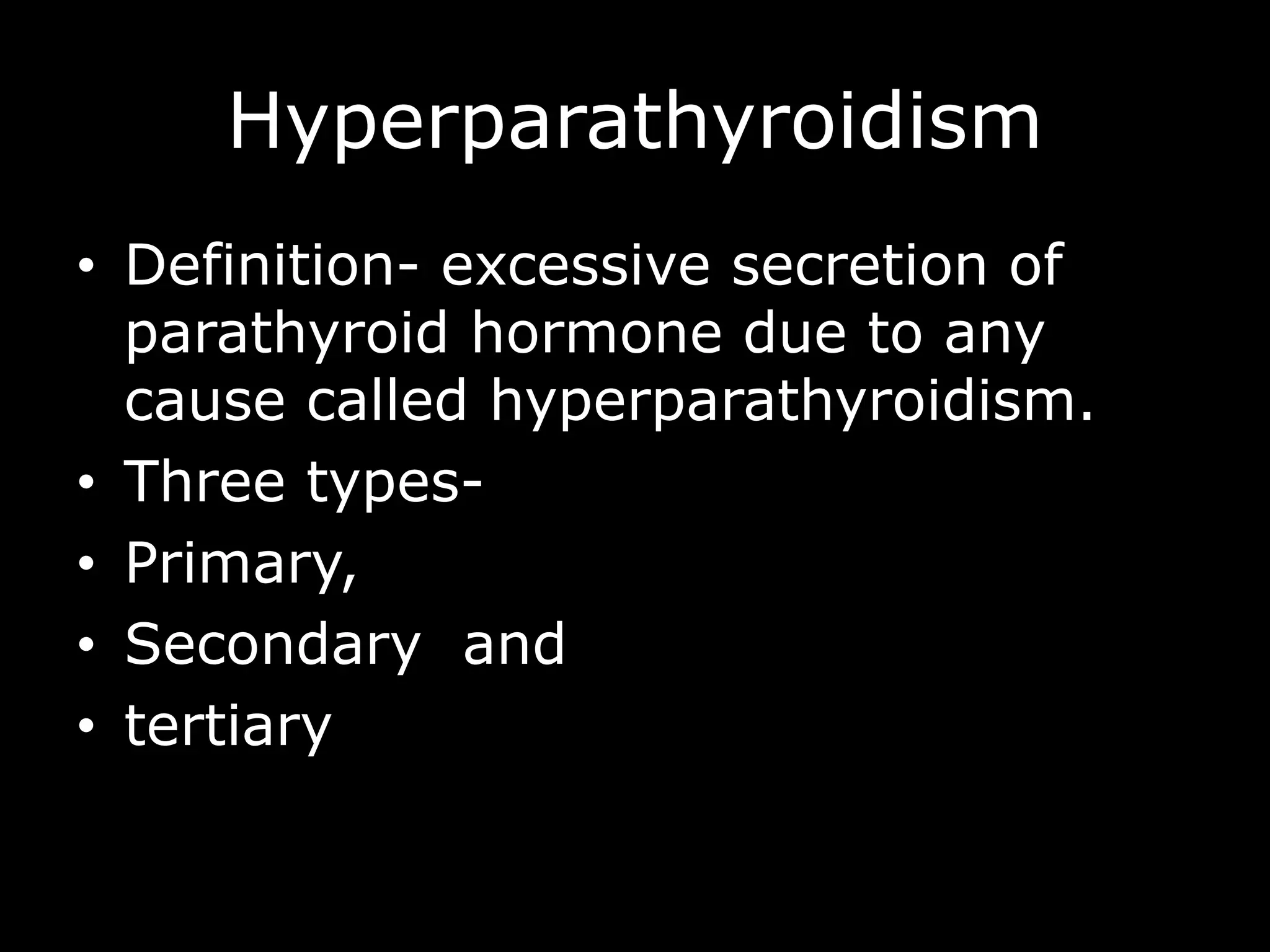This document provides information on the parathyroid gland including its history, anatomy, physiology, calcium metabolism, hypercalcemia, and hyperparathyroidism. Some key points:
- The parathyroid gland regulates calcium and phosphate levels in the body through secretion of parathyroid hormone (PTH).
- It consists of usually four small glands located on the posterior surface of the thyroid gland.
- Hyperparathyroidism is excessive secretion of PTH, which can be primary (autonomous secretion), secondary (compensatory to low calcium), or tertiary (persistent after secondary cause is resolved).
- Primary hyperparathyroidism is usually caused by a single adenoma and

































































